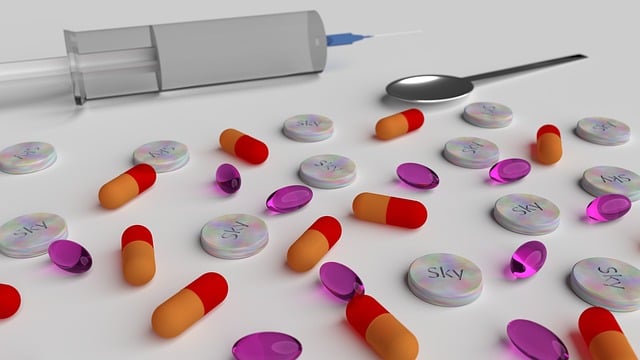Corticosteroid joint injections provide rapid, temporary relief from inflammation and pain associated with arthritis, tendinitis, or injuries by directly administering anti-inflammatory medication into affected joints. Duration of symptom improvement varies widely (several days to months) based on factors like corticosteroid type, joint blood flow, and individual metabolism. While effective, these shots aren't a long-term solution; symptoms return as the medication wears off, necessitating repeat injections or exploring alternative treatments for sustained relief from joint pain.
Corticosteroid joint injections have become a popular treatment option for managing joint pain, offering relief to those suffering from inflammation and arthritis. Understanding the duration of these injections is crucial for setting expectations. This article delves into the factors that determine how long corticosteroid shots last, exploring their effectiveness and providing insights on post-procedure care. By understanding the longevity of this treatment, patients can make informed decisions regarding their joint pain management.
Understanding Corticosteroid Joint Injections
Corticosteroid joint injections are a common treatment option for managing joint pain and inflammation caused by conditions like arthritis, tendinitis, or injury. These injections deliver a powerful anti-inflammatory medication directly into the affected joint space, providing rapid relief. The corticosteroids used are synthetic versions of hormones naturally produced by the body’s adrenal glands, which reduce swelling and pain when introduced into the joint. This targeted approach allows for more precise control over inflammation compared to oral corticosteroid treatments, minimizing systemic side effects.
Understanding how these injections work is essential for setting expectations regarding their duration. Corticosteroid shots for joint pain typically provide relief that lasts from several weeks to a few months, depending on various factors. The longevity of the effect depends on the concentration and volume of the corticosteroid used, as well as the overall health of the patient’s joints. While some people experience prolonged relief, others may need repeat injections every few months to maintain comfort.
The Effectiveness and Duration of Corticosteroid Shots
Corticosteroid shots for joint pain are designed to provide rapid and targeted relief from inflammation, swelling, and pain. These injections directly deliver a powerful anti-inflammatory medication into the affected joint space, offering significant benefits in terms of both symptom relief and improved function. The effectiveness of corticosteroid shots can last anywhere from several days to several weeks, depending on various factors such as the severity of the condition, the specific type of corticosteroid used, and the overall health of the patient’s joints.
The duration of relief from corticosteroid shots varies, but it’s important to note that they are not a permanent solution for joint pain. In many cases, patients experience substantial reduction in pain and inflammation immediately after the injection, with peak benefits typically occurring within 24-72 hours. However, as the effects begin to wear off, often around 1-3 weeks post-injection, the patient may once again start to feel symptoms return. For some individuals, a single corticosteroid shot may provide relief for several months, while others might require repeated injections at intervals recommended by their healthcare provider to manage recurring joint pain and inflammation.
Factors Influencing the Longevity of the Injection
The longevity of a corticosteroid joint injection can vary significantly from person to person, and several factors influence its duration. One key factor is the specific type of corticosteroid used; different steroids have varying rates of breakdown and absorption by the body. Generally, these injections provide relief for several weeks to a few months. The location of the injection also plays a role; joints with high blood flow, like the knee or shoulder, might experience faster dissipation of the steroid compared to less vascularized areas.
Another influencing factor is the patient’s overall health and metabolism. Individuals with faster metabolisms may clear the corticosteroids more rapidly, leading to shorter-lasting relief. Additionally, the severity of joint pain and inflammation at the time of injection can impact the treatment’s longevity. In cases of severe arthritis or chronic inflammatory conditions, injections might offer longer-lasting relief due to the persistent presence of the steroid in the affected area.
What to Expect After the Procedure and When to Seek Alternative Treatment
After a corticosteroid joint injection, it’s normal to experience some temporary relief from pain and inflammation. You may feel improved mobility and reduced discomfort for several days or even weeks following the procedure. However, it’s important to note that the effects of these shots are not permanent. The duration of relief varies depending on individual factors and the severity of your joint condition. Over time, as the medication wears off, you may experience a return of symptoms.
If the initial corticosteroid shot does not provide sufficient long-term relief, or if your pain persists despite the injection, it might be time to consider alternative treatment options. Joint pain can result from various underlying causes, and exploring different approaches can help manage your condition effectively. Consulting with a healthcare professional is essential to discuss other treatment modalities, such as physical therapy, joint replacement surgery, or alternative medications, which could offer sustained relief for your corticosteroid shots for joint pain.
Corticosteroid joint injections can provide significant relief from joint pain, with effects lasting anywhere from several days to several weeks. The longevity of these shots depends on various factors, including the severity of inflammation and individual patient responses. Understanding these injections’ effectiveness and the influencing factors is crucial for managing joint pain effectively. If symptoms persist beyond expected relief periods or worsen, it’s advisable to consult a healthcare professional to explore alternative treatment options tailored to your specific needs.
